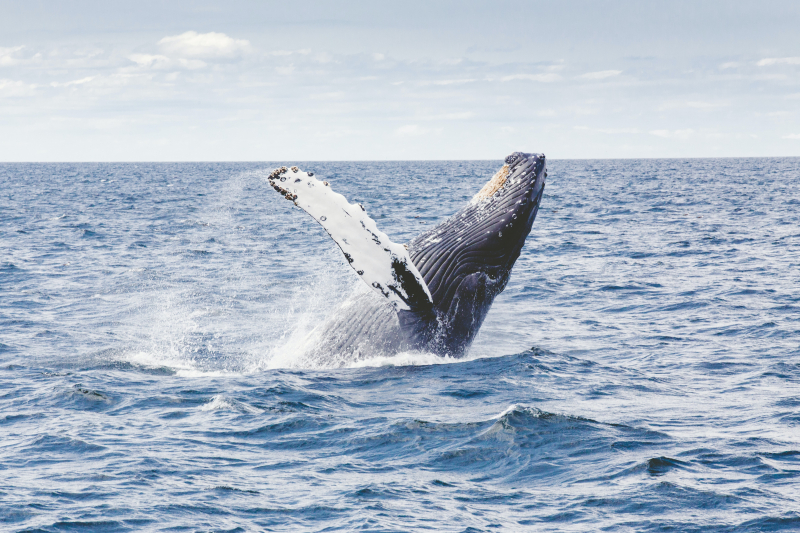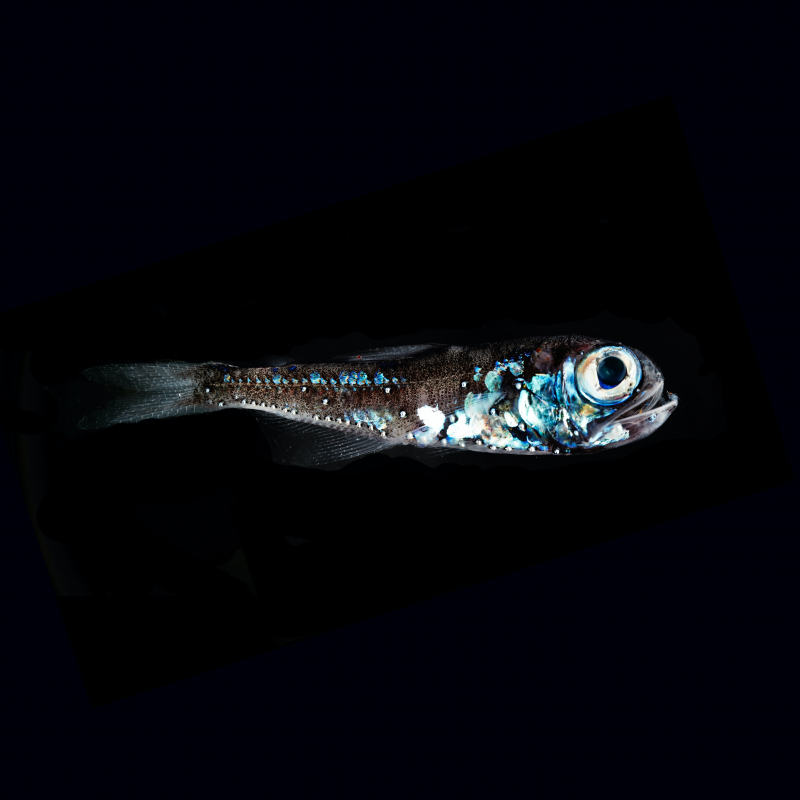Top 10 Interesting Biological Mysteries
The study of all living things is included in the broad topic of biology. It is not surprising that there are many uncertainties in this given the large amount ... read more...of information it provides. Today, let's look at some of the biggest biological puzzles that keep researchers up at night.
-
For billions of years, the majority of life on Earth consisted of single-celled organisms and very primitive multicellular animals. After that, the Cambrian Explosion, also known as the Divergence of the Species, occurred roughly 540 million years ago. On an evolutionary scale, the time it took for nearly all major animal groupings to appear in the fossil record was only about 20 million years.
However, what specifically set off the Cambrian Explosion? Despite the fact that numerous scientists have investigated it, there is no definitive solution to that question. According to a widely accepted theory, the event was precipitated by an abrupt and significant rise in atmospheric oxygen concentrations to levels resembling those of modern times. Yet, a second study contends that the Cambrian Explosion was caused by a scarcity of oxygen, not an abundance, and makes the exact opposite claim.
According to proponents of the Snowball Earth theory, the early Earth may have experienced a severe ice age that rendered the majority of the planet's surface frozen, and that it was the end of this ice age that resulted in the fast diversification of species. Others contend that the explosion was actually a succession of successive "pulses of evolutionary innovation," rather than a single, catastrophic occurrence. Undoubtedly a significant moment in the history of life on Earth, the Cambrian Explosion is still a mystery to scientists.
Image by Rostyslav Savchyn via unplash.com 
Image by Torsten Dederichs via unplash.com -
You already know that viruses, despite being submicroscopic, may have a significant impact on the planet. As viruses cannot reproduce, they are technically not "living," instead multiplying inside the cells of their hosts, which can range from enormous mammals to simple bacteria. It is not surprising that researchers have extensively investigated viruses to try and learn as much as they can about them given that this frequently has a negative effect on the hosts and can even kill them.
That raises a crucial query: where did viruses originate? We don't even really know where to position them on the evolutionary timeline because they didn't leave behind a physical fossil record, making it extremely difficult to analyze their origin. They are positioned at the very beginning, before the emergence of cellular life, according to one theory called the "virus-first hypothesis."
According to the regressive hypothesis, viruses first emerged when single-cell organisms started developing mutualistic interactions. The relationship eventually developed into a parasitic one when the smaller of the two organisms lost its capacity for protein synthesis but preserved its capacity for replication, turning it into a virus.The progressive or "escape" hypothesis proposes that viruses developed from genetic fragments that broke off from their initial species and managed to attach themselves to different ones. These are the three most well-known theories on the origin of viruses, but there are many others, and none of them has enough evidence to be regarded as conclusive. It seems possible that this is one subject that will never be fully understood unless a significant advancement is made.

Image by CDC via unplash.com 
Image by CDC via unplash.com -
A German doctor by the name of Ernst Gräfenberg made the claim that he had found "an erotic zone positioned on the anterior wall of the vagina along the path of the urethra that would enlarge during sexual stimulation" back in the 1950s.
In the early 1980s, when a new group of scientists under the direction of Professor Beverly Whipple produced a book on the subject that went on to become a worldwide bestseller, the general public mostly ignored his study. They too bragged about this erogenous but illusive region on the female body. The Gräfenberg spot, often known as G-spot for short, was given a name by them.
There is only one issue: the G-spot doesn't actually exist. Or perhaps it does. but most likely not. Even after searching for the G-spot for over 70 years, the scientific community is still divided regarding its existence, which may explain why that sounds a little perplexing to you. Every few years, it seems, a new person claims to have located the fabled G-spot only to have their claim debunked by other experts. The legendary G-spot will probably never be found, but until then, rumors will continue to surround it.

Image by Womanizer Toys via unplash.com 
Image by Octavio Fossatti via unplash.com -
Even the most fundamental biological theories can be shown to be incorrect or at the very least uncomplete. That was demonstrated by researchers from Tel Aviv University in 2020, when they unintentionally found the first animal to survive without oxygen.
The in question organism is a whitish parasite with an 8-millimeter diameter known as Henneguya salminicola. It affixes to a wide range of salmon species and spreads a disease called "milky meat" or "tapioca." Although this parasite has been well known for more than a century, it wasn't until researchers mapped the genome of the Henneguya genus that they realized H. salminicola lacked the mitochondria necessary for aerobic respiration.
In fact, the parasite lacked any mitochondrial DNA, suggesting that it had somehow evolved to generate energy devoid of oxygen, albeit the specifics of how it does this are yet unknown. This is something that other creatures like amoebas and fungi can do, but H. salminicola is the first example of what may be considered a "animal" missing aerobic respiration.

Image by Denes Kozma via unplash.com 
Image by Michael Olsen via unplash.com -
Have you ever gotten a cold or the flu after staring at the Sun or another bright light? Most of you probably replied "Sure," with the remaining two-thirds having no idea what we're on about. This is brought on by the photic sneeze reflex, also known as the ACHOO Syndrome or autosomal dominant compulsive helio-ophthalmic outburst. You sneeze as a response when you are suddenly exposed to strong lighting. Up to 30% of persons are affected, and the cause is unknown. It might be an inherited genetic condition from your parents, or it might result from a physical issue like a deviated nasal septum.
The greatest minds in history have experienced ACHOO Syndrome. According to Aristotle, the heat from the sun was to blame. Francis Bacon, an English philosopher who lived in the 17th century, disproved him with a straightforward experiment by closing his eyes and walking out into the hot sun. There were no sneezes, but the heat persisted. He sneezed after opening his eyes. He reasoned that perhaps the sunlight had made the eyes water, and the additional moisture had irritated the nose. Today, we know that he was mistaken as well because the effect occurs too quickly for this to occur, but the specific etiology of ACHOO is still unknown.

Image by Josh Hild via pexels.com 
Image by Cliff Booth via pexels.com -
We've all performed the basic yawn at some point. In fact, the majority of humans do it frequently, and it has also been seen in other creatures like dogs, apes, and even reptiles. We abruptly take in a lot of air, which stretches the eardrums, and then we quickly exhale. We frequently extend our limbs as well, and this action is referred to as pandiculation. Yet why do we do it still remains a mystery.
Hippocrates proposed that humans yawn to get rid of "bad air" in ancient times, which is when theories on why we yawn first emerged. Then, in the 18th century, scientists developed the marginally more rational theory that yawning was a mechanism by which the body could raise the level of oxygen in the blood, elevating our pulse rates and making us more alert. The lack of an oxygen increase after yawning in current testing has led to the dismissal of this theory as well. The currently accepted theory contends that yawning serves to cool the brain, although further study is necessary before a definitive conclusion can be drawn.

Image by Nathan Anderson via unplash.com 
Image by Nathan Anderson via unplash.com -
The largest animal to ever inhabit this planet is the blue whale. Although you might assume that would make it easier to monitor, it is actually an extremely solitary and secluded animal—especially when compared to other whales. The social structure and relationships of blue whales are among the many things we still don't fully understand, but their mating and giving birth practices continue to be a complete mystery.
Don't misunderstand us; scientists are aware of the mechanics of blue whale anatomy, but they have no knowledge of the blue whales' mating habits or where they travel to breed and give birth. . The behavior of its near cousin, the humpback whale, who is far less reluctant to act for the camera, must be used as a guide as we have yet to film two blue whales mating.
A hot run is a behavior practiced by humpback whales in which one or more males pursue a female whale over great distances in an effort to mate with her. Some scientists in 2017 thought they had captured two blue whales doing the identical action on camera for the first time, but other specialists are still skeptical.
Image by Thomas Kelley via unplash.com 
Image by guille pozzi via unplash.com -
The competitive exclusion principle, often known as Gause's Law, is a concept in ecology that asserts that two species that are vying for the same scarce resources cannot coexist peacefully. One of the species will eventually always have a slight edge over the other, which will allow it to dominate it and possibly even drive it extinct. The phenomenon has been observed often by scientists, although plankton appear to be an exception to the rule.
According to British biologist G. Evelyn Hutchinson, who discovered that most settings that include plankton always have a diverse diversity, the so-called paradox of the plankton has been around since 1961. He made specific reference to phytoplankton, which is made up of microalgae, noting that there are typically between 10 and 100 different kinds of phytoplankton present at any given moment in most lakes.
Of course, our knowledge of ecology has improved since Hutchinson's time. The paradox may be explained by a number of factors, including the lack of long-term environmental stability in lakes, predators consuming the dominating phytoplankton, and the unpredictable results of species competing for a variety of resources. There are a number of alternatives, but the dilemma has yet to be conclusively resolved.
Image by Noé Sardet via unplash.com 
Image by Sangga Rima Roman Selia via unplash.com -
Close your eyes and make an effort to walk straight the next time you're in a field. It's harder to do than you may think, as you'll discover. Some research carried out over decades actually imply that it might perhaps be impossible. Blindfolded individuals frequently find themselves walking in circles despite believing they are moving straight ahead.
Sometimes the blindfold is not even necessary. In a study conducted in 2010, the walkers were given the opportunity to see, but were still unable to walk in a straight line on an overcast day. It appears that in order to maintain a straight line, people require an external focus point (such as the Sun, a mountain, or a towering building).
Scientists don't fully understand why this is the case; they do have some theories. Years ago, they believed that this would be the result of an imbalanced limb, where one leg might be longer or stronger than the other, resulting in an asymmetrical gait. The 2010 study ruled that out, and the authors now speculate that the culprit may be the vestibular system, which controls our balance, being intrinsically flawed. Ordinarily, the brain would use external markers for recalibration to fix these minor faults, but when they vanish, we find ourselves going in circles.
Image by Alexey Shikov via unplash.com 
Image by Jared Weiss via unplash.com -
The abrupt appearance of flowering plants, or angiosperms, in the Early Cretaceous period's fossil record is a well-known phenomenon that Charles Darwin himself referred to as a "abominable riddle" in a letter to botanist Joseph Dalton Hooker.
If we are being precise, in his letter, Darwin only made reference to dicotyle flowering plants, which are those with two embryonic leaves, but over the years, the query expanded to encompass all angiosperms and asked, "How did they diversify so fast in such a short period?" Darwin was especially troubled by this issue since it seemed to go against his beliefs and because some of his detractors were using it to argue for "divine intervention."
In his latter years, Darwin proposed the hypothesis that angiosperms may have originated on an undiscovered island or even a continent, where they may have evolved for millions of years before spreading to other parts of the planet and becoming part of the fossil record that was then known.Biologists have been perplexed by the problem for about 150 years. There are theories; for example, a new study from the University of Bristol published in early 2021 proposed that flowering plants simply emerged millions of years sooner than previously believed, giving them more time to diversify. But in the absence of concrete evidence, Darwin's riddle is still abhorrent.

Image by Misael Moreno via unplash.com 
Image by Bruno Martins via unplash.com































